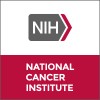
Helical Tomotherapy, Fludarabine Phosphate, and Melphalan Followed By Allo-HSCT in Hematological...
LeukemiaMyelodysplastic SyndromesRATIONALE: Giving chemotherapy drugs, such as fludarabine phosphate and melphalan, and HT before a donor stem cell transplant helps stop the growth of cancer cells. It also helps stop the patient's immune system from rejecting the donor's stem cells. When the healthy stem cells from a donor are infused into the patient they may help the patient's bone marrow make stem cells, red blood cells, white blood cells, and platelets. Sometimes the transplanted cells from a donor can make an immune response against the body's normal cells. Giving HT together with fludarabine phosphate and melphalan before a transplant may stop this from happening. PURPOSE: This clinical trial studies helical tomotherapy (HT), fludarabine phosphate, and melphalan followed by donor stem cell transplant in treating patients with hematologic malignancies.

Intensity-Modulated Radiation Therapy, Etoposide, and Cyclophosphamide Followed By Donor Stem Cell...
LeukemiaRATIONALE: Giving intensity modulated radiation therapy (IMRT) and chemotherapy, such as etoposide and cyclophosphamide, before a donor stem cell transplant helps stop the growth of cancer cells. It also helps stop the patient's immune system from rejecting the donor's stem cells. When the healthy stem cells from a donor are infused into the patient they may help the patient's bone marrow make stem cells, red blood cells, white blood cells, and platelets. Sometimes the transplanted cells from a donor can make an immune response against the body's normal cells. Giving IMRT together with chemotherapy before transplant may stop this from happening. PURPOSE: This phase I/II trial is studying the side effects and best dose of intensity-modulated radiation therapy (IMRT) when given together with etoposide and cyclophosphamide followed by donor stem cell transplant and to see how well they work in treating patients with relapsed or refractory acute lymphoblastic leukemia (ALL) or acute myeloid leukemia (AML).

Reduced Intensity Conditioning With Clofarabine, Antithymocyte Globulin (ATG), Total Lymphoid Irradiation...
Acute Myeloid LeukemiaMyelodysplastic Syndrome5 moreThis study will examine the safety of clofarabine, TLI and ATG as a reduced conditioning regimen prior to allogeneic transplantation. The impact of the conditioning regimen on the presence of the circulating regulatory as compared to activated T cell populations will be assessed.The recovery of DC populations post-transplant will be examined, along with the effect of the regimen on disease free and overall survival.

LMB-2 to Treat Hairy Cell Leukemia
Hairy Cell LeukemiaBackground: About 80% of patients with hairy cell leukemia (HCL) have tumor cells that have a protein on their surface called cluster of differentiation 25 (CD25). The experimental drug LMB-2 is a recombinant immunotoxin that has been shown to kill leukemia and lymphoma cells with the CD25 protein. (A recombinant immunotoxin is a genetically engineered drug that has two parts - a protein that binds or targets a cancer cell, and a toxin that kills the cancer cell to which it binds.) Objectives: To evaluate the safety and effectiveness of LMB-2 in patients with HCL whose cancer cells contain the CD25 protein. To evaluate the effects of LMB-2 on the immune system, determine how the drug is metabolized by the body and examine its side effects. Eligibility: -Adults with hairy cell leukemia whose tumor cells have CD25 on their surface Design: Up to 27 patients may be included in the study. Patients receive an infusion of LMB-2 through a vein every other day for three doses (days 1, 3, 5), constituting one treatment cycle. Patients may receive up to six treatment cycles every 4 weeks unless their cancer worsens or they develop unacceptable side effects. Blood is drawn weekly for various tests. Before each cycle and in follow-up visits, disease status is evaluated with a physical examination, blood tests, chest x-ray and electrocardiogram. Before the first cycle, patients may have a computed tomography (CT) scan, echocardiogram (heart ultrasound test) and bone marrow biopsy. With the patient's permission, these tests may be repeated before other cycles also.

Combination Chemotherapy With or Without Donor Stem Cell Transplant in Treating Patients With Acute...
Acute Lymphoblastic LeukemiaAdult B Acute Lymphoblastic Leukemia5 moreThis phase II trial is studying the side effects of giving combination chemotherapy together with or without donor stem cell transplant and to see how well it works in treating patients with acute lymphoblastic leukemia. Drugs used in chemotherapy work in different ways to stop the growth of cancer cells, either by killing the cells or by stopping them from dividing. Giving more than one drug (combination chemotherapy) may kill more cancer cells. Giving chemotherapy and total-body irradiation before a donor stem cell transplant helps stop the growth of cancer cells. It also stops the patient's immune system from rejecting the donor's stem cells. The donated stem cells may replace the patient's immune cells and help destroy any remaining cancer cells (graft-versus-tumor effect).

A Phase II Study of Dasatinib in Children and Adolescents With Newly Diagnosed Chronic Phase Chronic...
LeukemiaThe purpose of this study is to determine whether dasatinib is safe and effective in children and adolescents with newly diagnosed chronic myeloid leukemia (CML), or in children with Ph+ acute lymphoblastic leukemia (ALL), accelerated or blast phases CML who relapse after imatinib or who are resistant or intolerant to imatinib. The side effects of this oral investigational drug in children and adolescents will be evaluated

Dasatinib in Treating Patients With Early Chronic Phase Chronic Myelogenous Leukemia
Chronic Phase Chronic Myelogenous LeukemiaBCR-ABL1 Positive2 moreThis randomized phase II trial studies how well dasatinib works in treating patients with early chronic phase chronic myelogenous leukemia. Dasatinib may stop the growth of cancer cells by blocking some of the enzymes needed for cell growth.

First-in-human Study Aiming to Characterize the Safety, Tolerability, Pharmacokinetic and Preliminary...
Acute Myeloid LeukemiaAdult1 moreThis First In Human (FIH) study is a prospective, open-label, multicenter, Phase 1 study, with a dose escalation design, followed by an optimized design. It will consist in a Single Ascending Dose (SAD) part and a Multiple Ascending Dose (MAD) part followed by a "Regimen optimization" part with an extension cohort.

Autologous HuCART19 T Cells Manufactured Using the CliniMACS Prodigy Platform for Pediatric B-ALL...
B Cell Acute Lymphoblastic Leukemia (B-ALL)B Lineage Lymphoblastic LymphomaThis study will determine the safety and efficacy of moving to a second-generation manufacturing process using the CliniMACS Prodigy platform to manufacture huCART19 cells for patients with B cell Acute Lymphoblastic Leukemia (B-ALL).

CIK-Cells in Relapsing Patients With Acute Leukemia or Myelodysplastic Syndromes After SCT.
Myelodysplastic SyndromesAcute LeukemiaMulti-site, non-randomized Phase I/II study involving children and adults.
